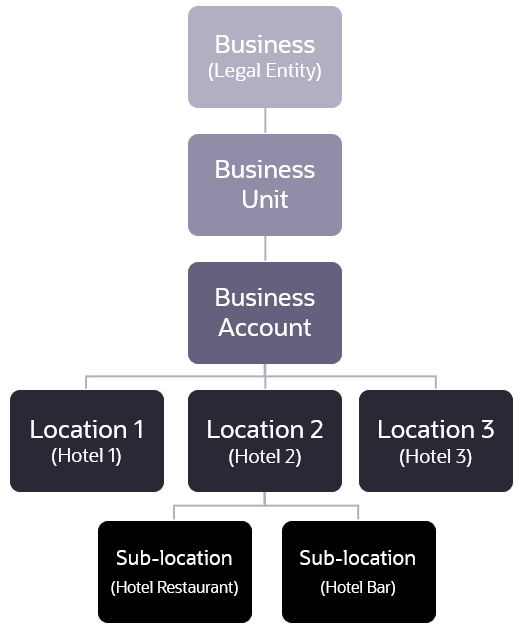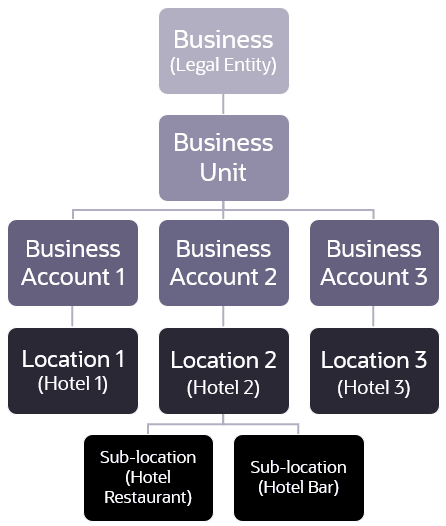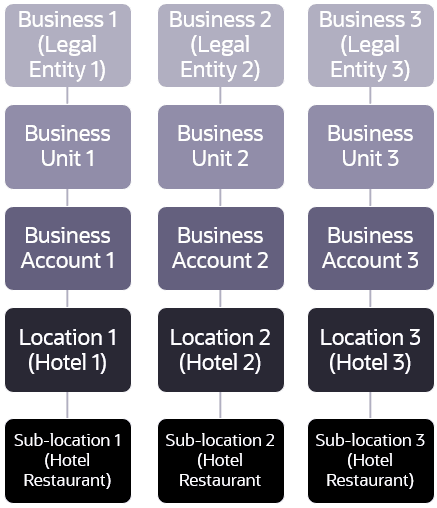Understanding the Business Organization Structure
A business represents each legal entity within your organization. When you get started with Oracle Payment Cloud Service, you add the business details and then complete the business verification process. The business is automatically owned by the person who added it and they can add more users. Users manage the business.
Business units are linked to the business and represent a subdivision within the business, like a restaurant or retail space within a hotel. A business unit is automatically added for each industry you select. The business unit is owned by the person who added it, if they have the permissions to manage business units.
Business accounts are linked to the business units. The business account is owned by the person who added it. Business locations, or stores, are the physical address of a storefront, and each one is assigned to a single business account. Before transactions can take place at a location, terminals in that location must be onboarded.
Connected businesses, business units, business accounts, and locations must all be located within the same country.
You can structure your organization in several ways. For example, some organizations only have one business account, while others have several. The following images show different examples of an organization structure, but you are not limited by just these examples.
One Legal Entity with One Bank Account

One Legal Entity with Multiple Bank Accounts

Multiple Legal Entities

Parent topic: Getting Started